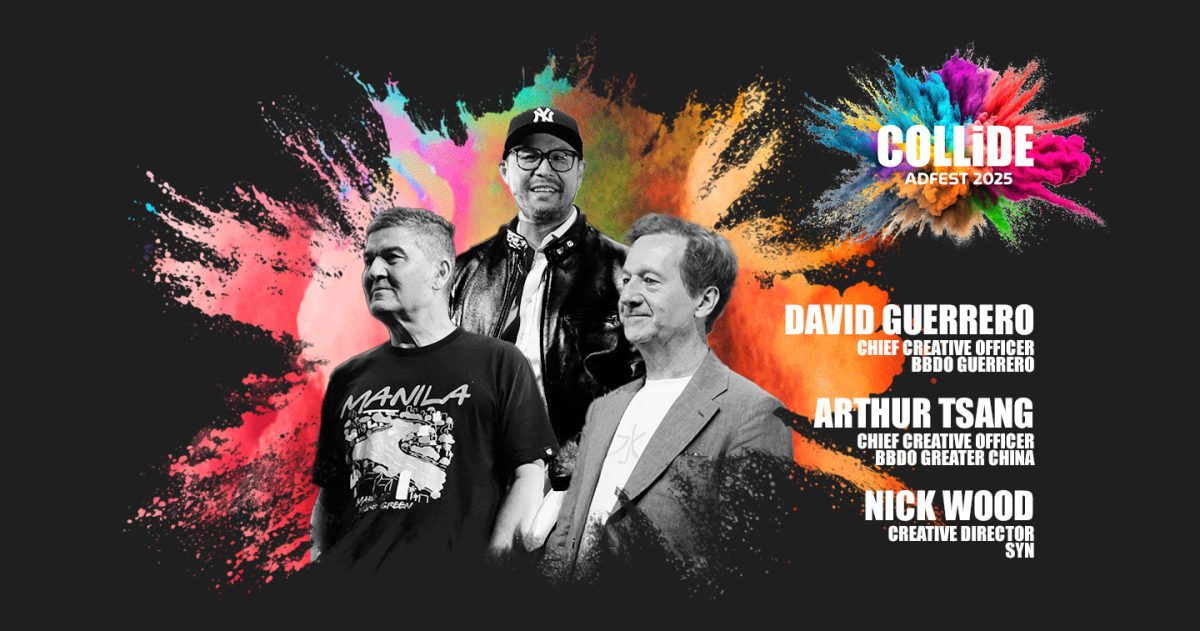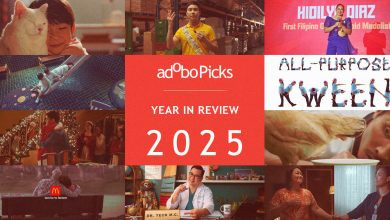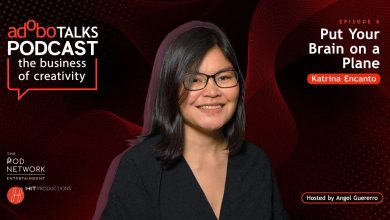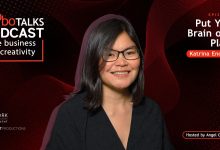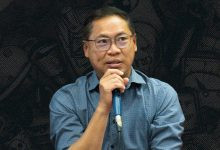PATTAYA, THAILAND – At ADFEST 2025, the theme “COLLIDE” was at the heart of every conversation, sparking ideas and creativity throughout the three-day event at the Pattaya Exhibition and Conference Hall (PEACH) in Pattaya, Thailand, from March 20-22.
On March 20, BBDO Guerrero’s Chief Creative Officer David Guerrero, BBDO Greater China’s Chief Creative Officer Arthur Tsang, and Syn Founder and Creative Director Nick Wood took the stage to discuss how music can elevate the taste of food, transform the perception of space, set the rhythm of a run, and even shape the sound of an electric car. After their keynote, the trio sat down with adobo Magazine to share more about the pivotal role sound plays in their work. The trio wanted to turn the volume up and discuss how sound should take center stage in creative and business decisions, rather than being an afterthought for advertisers.
Sound and wellness
David’s discussion emphasized how sound and music can transcend traditional campaigns to truly benefit society. He cited the groundbreaking, double Cannes Lions Grand Prix-winning Sick Beats by Woojer as a prime example, a project that Nick has worked on in 2021. This innovative sound therapy uses Woojer’s haptic vests to deliver music at 40 Hz, specifically designed to aid those with Cystic Fibrosis. By combining music and vibration, Sick Beats creates a multisensory experience that stimulates the lungs and improves respiratory health, showcasing the powerful fusion of technology, music, and healthcare to enhance lives.
BBDO Guerrero is tapping into the same innovative vein with their recent launch of Pepsi Soundbites. Collaborating with Nick from Syn, they discovered how specific sounds can enhance taste — creating a multi-sensory experience where the right sound amplifies the flavor profile of your food, whether sweet, salty, or savory, with Pepsi as the ultimate flavor conductor.
David is optimistic on the future of sound-led campaigns like these transformed into a bigger and more expansive environment. “I think there’s no question that in the future, or even now, you can have—probably already do — personalized sounds that are distributed via Bluetooth or some other technology, allowing you to walk into outdoor spaces.”
Arthur is no stranger to using sound as a tool for wellness. In BBDO Greater China’s groundbreaking Oddly Pleasurable campaign for Dove Chocolate, he collaborated with renowned neuroscientist Paul Zak, Professor at Claremont Graduate University, to leverage immersion neurological response testing for real-time, data-driven decisions.
This innovative approach allowed them to fine-tune the films to trigger the most immersive emotional responses. The campaign targeted dissatisfied workers, positioning Dove as the perfect brand to create a moment of indulgence, turning everyday stress into a pleasurable break and driving both top-of-mind awareness and a new consumption occasion.
AI and human input
David also spotlighted their ADFEST Bronze-winning campaign for Mountain Dew, Play The Dew: Dew Battle where they cleverly used the brand’s name as the central sound in every spot. BBDO Guerrero demonstrated the power of human voice in the age of AI, with one voice artist bringing the entire campaign to life across all the spots, proving that in this age and time, the human touch still reigns supreme.
Arthur believes that AI is a helpful tool that creatives should embrace. “AI could be a great tool to quickly get to results on what kind of sound or combination of sound could work.” However, he stressed the importance of human input: “AI can come up with an unlimited number of variations, but 98% of what it puts out might be garbage.” He pointed to Nick’s plant-wave project, explaining, “The plant is creating the data, but Nick still had to match that data to create the sound,” emphasizing the need for human curation in the creative process.
Immersive experiences and sound
As for Nick, he believes that sound and immersive experience go hand-in-hand. He believes that its an untapped market to actually create a very specific sound that could impact people’s behavior.
“We know for a fact that spaces with great acoustics and a well-curated soundtrack or playlist suited to the atmosphere encourage people to spend more money — think bars or restaurants. If a room is uncomfortably echoey with people talking over each other, and the background music doesn’t fit, people will want to leave as quickly as possible. We’re learning that it’s not just about the ambience or sound, but the acoustics of a room are incredibly important,” Nick added.
For Arthur, psychoacoustics and advertising might be converging in the coming years. “Music just has this indescribable effect on you immediately, right? And if you can harness that power and not just be random, guessing — ‘Oh, this artist, maybe they’ll get a number one, maybe not. Maybe they’ll compose a hit, maybe not.’—but you can actually break it down into how it makes people feel, I think that’s a huge area of where the future could lie.”





Sonic impact on branding
Like any form of media integrated into advertising, sound has proven that it can shape how people react and behave. When asked how they ensure that the sound they’ll use aligns with the tone and the voice of the brand, David and Arthur were straightforward with their answers.
David noted in the Play The Dew: Dew Battle campaign they just drove back to the core of Mountain Dew’s personality – “playful and energetic.”
“We did experiment quite a lot ahead of time, and I think where we landed was that the core idea is so simple. We just got the brand name, and by repeating the brand name—which would normally be an irritant—but if you repeat the brand name in a kind of enjoyable way, then it’s okay.”
On the other hand, Arthur emphasized the importance of considering sonic impact early in the creative process to ensure sound aligns with the brand. He shared, “I think it’s getting the creative teams at the early stages of ideation to already be talking about the sonic impact that we want to have.” Arthur noted that too often, sound choices are left until the final production stages, which can lead to budget and integration issues. “Even when we get to production meetings, directors will always have a shooting board, very rarely at a first meeting do they say, ‘This is the music choice,'” he explained.
Arthur advocates for integrating sound into the concept from the beginning, suggesting that creative teams think about sound in parallel with visuals. He further highlighted how audio, unlike visual elements, is constantly present and can deeply influence the audience’s experience.
“The sound is always there, and that’s why, I guess, we don’t think about it, because it’s just always present.”

